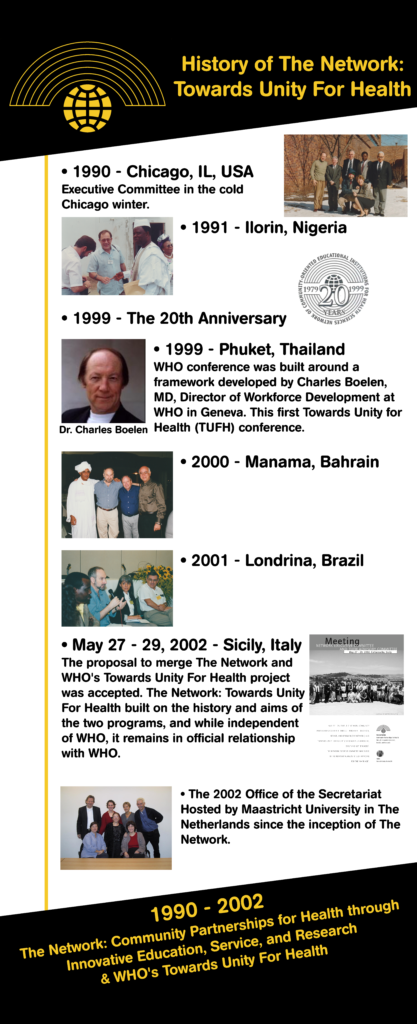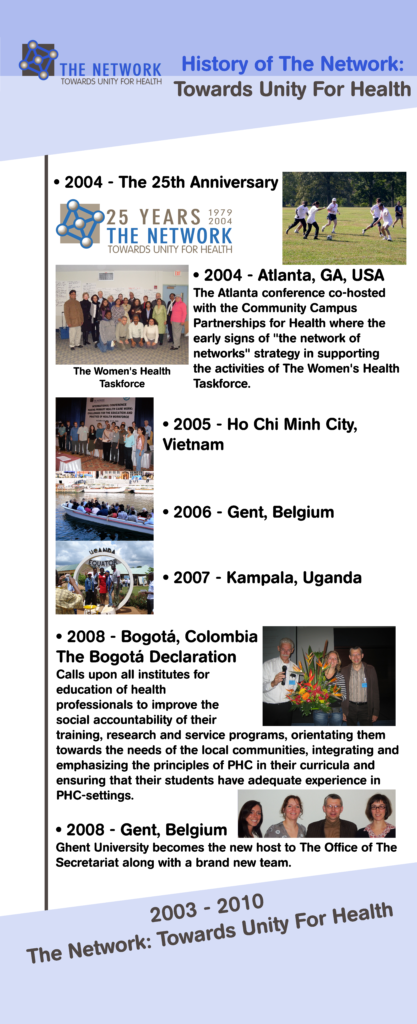Since 1979

TUFH: A Network of Networks
In 2019 TUFH celebrated 40 Years of uniting Global Agendas towards Universal Health and Equitable Care




According to the WHO, the first meeting of the Network of Community-Oriented Educational Institutions for the Health Sciences was held in 1979, and the following 19 medical schools participated:
- Australia: Flinders University of South Australia
- Canada: McMaster University
- Chile: Universidad de Chile
- Colombia: Universidad del Valle
- Egypt: Assiut University
- India: Christian Medical College, Vellore
- Indonesia: Gadjah Mada University
- Israel: Ben Gurion University of the Negev
- Mexico: Universidad Autónoma de Nuevo León
- Netherlands: University of Limburg
- Nigeria: University of Ilorin
- Pakistan: Aga Khan University
- Philippines: University of the Philippines
- South Africa: University of Natal
- Sri Lanka: University of Colombo
- Sweden: Linköping University
- Thailand: Chiang Mai University
- United Kingdom: University of Newcastle upon Tyne
- United States: University of New Mexico
The goal of the network was to help each other develop training programs that addressed the health needs of the local communities, especially the underserved populations. The network also aimed to promote community-oriented medical education as an innovative and effective approach to medical training.
